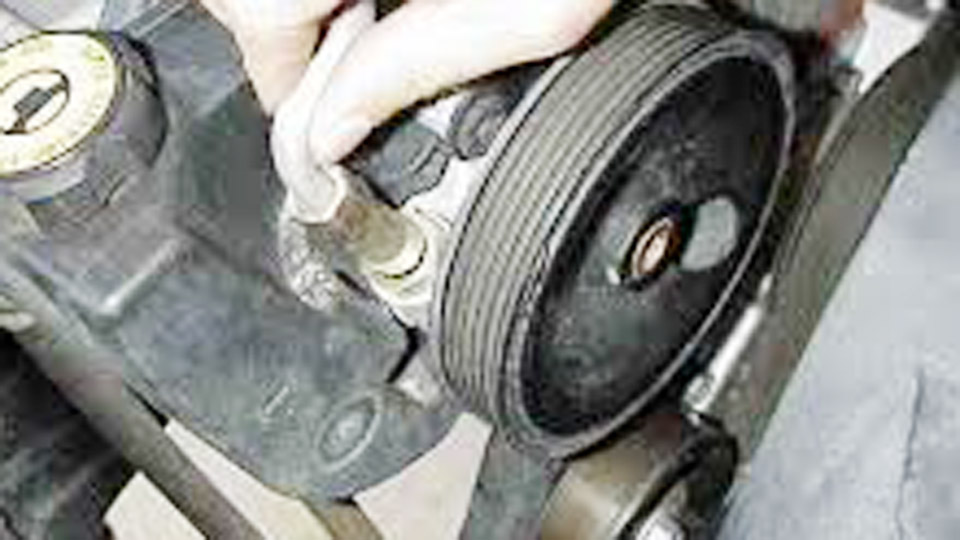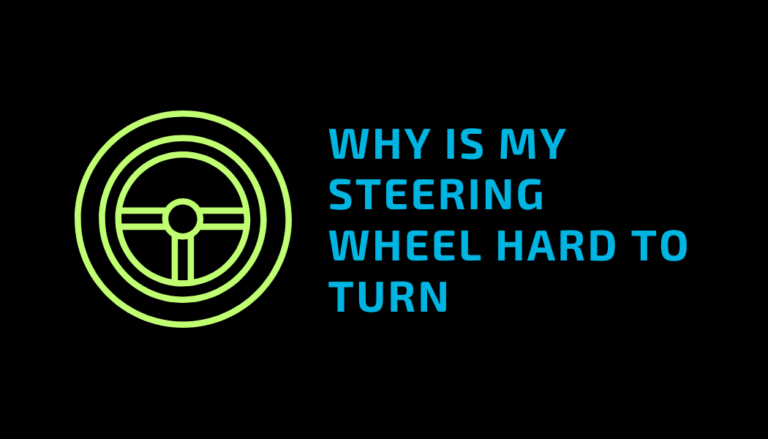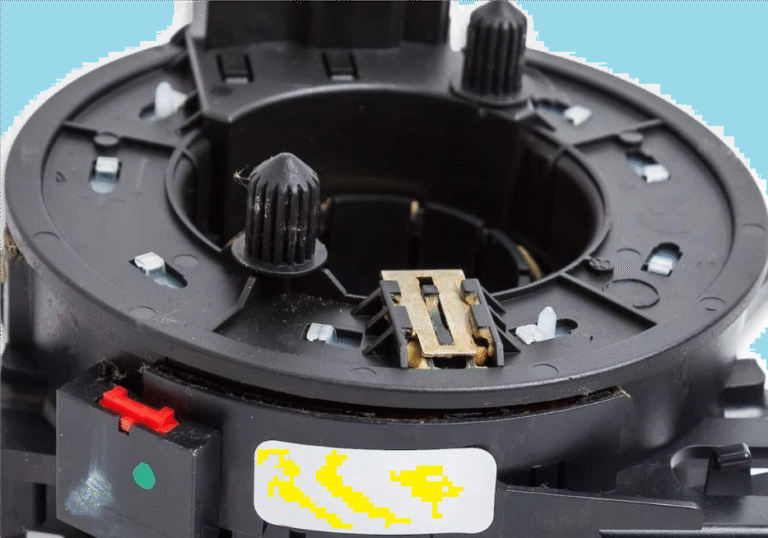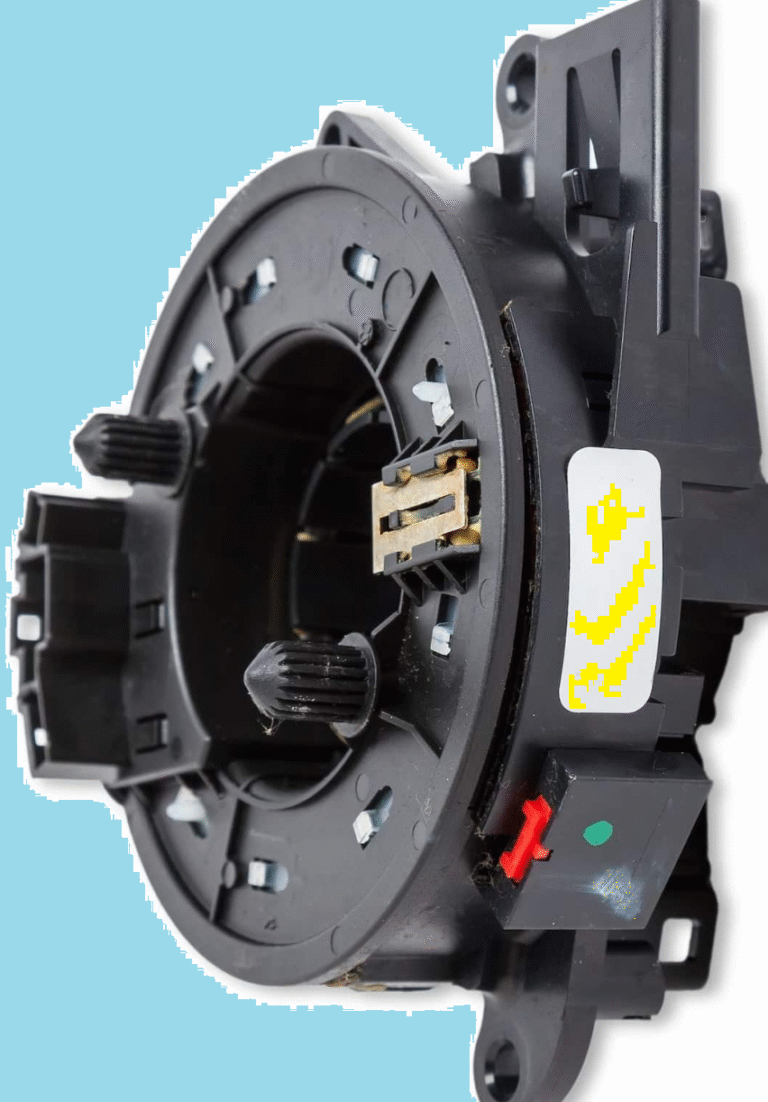You just installed a shiny new power steering pump in your car, expecting smooth, quiet turns, but instead, you’re hearing whines, groans, or squeals. If you’re wondering why is my new power steering pump making noise, you’re not alone. As a DIY mechanic who’s spent countless weekends under the hood of my Ford Mustang and my wife’s Honda CR-V, I’ve tackled this issue more than once.
A noisy power steering pump can be frustrating, but it’s usually fixable with a little know-how. Let’s dive into the reasons behind those annoying sounds, how to diagnose them, and what you can do to get your steering system purring again—whether you’re cruising through snowy Chicago streets or sunny California highways.

Image by fuelandfriction
How Power Steering Pumps Work
Before we get into the noise, let’s talk about what a power steering pump does. It’s the heart of your car’s hydraulic power steering system, pushing fluid through hoses to the steering rack or gearbox. This fluid reduces the effort needed to turn the wheel, making driving easier, especially at low speeds or in tight parking lots.
The pump is typically driven by a belt connected to the engine, and it contains vanes or gears that pressurize the fluid. When everything’s working right, it’s nearly silent. But when it’s not, you’ll hear anything from a high-pitched whine to a low growl. Understanding this system is key to figuring out why your new pump is making a racket, especially in demanding US driving conditions like stop-and-go city traffic or winding rural roads.
Why It Matters: A noisy pump isn’t just annoying—it can signal issues that, if ignored, could lead to steering failure, leaving you stranded or worse. I learned this the hard way when a whining pump on my old Chevy Silverado turned into a full-blown leak, soaking my driveway and costing me a tow.
Common Reasons for Power Steering Pump Noise
A new power steering pump should be quiet, so if it’s making noise, something’s off. Here are the most common culprits I’ve seen in my garage and on friends’ cars.
Air in the System
Air bubbles in the power steering fluid are a top cause of whining or buzzing noises. When you install a new pump, air can get trapped if the system isn’t properly bled. The air compresses and cavitates, creating a high-pitched whine that’s loudest when turning the wheel.
Real-World Example: After swapping the pump on my buddy’s Dodge Ram, we heard a persistent whine. We forgot to bleed the system properly—20 minutes of turning the wheel with the car off fixed it.
Low or Contaminated Fluid
Even a new pump can’t function without the right fluid level or quality. Low fluid can cause cavitation (air bubbles forming), while old or contaminated fluid can damage the pump’s internals, leading to groans or squeals.
My Experience: On my CR-V, I once topped off the power steering with the wrong fluid type. The pump whined like a banshee until I flushed it with Honda’s recommended fluid.
Improper Installation
A new pump can make noise if it’s not installed correctly. Common mistakes include misaligned belts, loose pulleys, or incorrect mounting bolts. These can cause vibrations or strain, leading to squealing or rattling sounds.
Defective Pump
Even new parts can be faulty. Manufacturing defects, like worn bearings or damaged vanes, can cause noise right out of the box. This is rare but happens, especially with budget brands.
Belt Issues
The serpentine or power steering belt drives the pump. If it’s too tight, too loose, or worn, it can squeal or slip, mimicking pump noise. A glazed or cracked belt is often the culprit.
| Cause | Noise Type | Fix |
|---|---|---|
| Air in System | Whining/Buzzing | Bleed the system |
| Low/Contaminated Fluid | Whining/Groaning | Flush and refill with correct fluid |
| Improper Installation | Squealing/Rattling | Check alignment, bolts, pulley |
| Defective Pump | Grinding/Whining | Replace with quality unit |
| Belt Issues | Squealing | Adjust or replace belt |
Diagnosing the Noise
Figuring out why your new power steering pump is noisy starts with pinpointing the sound. Here’s a step-by-step guide I use in my garage to diagnose the issue.
Step 1: Listen to the Noise
Start the engine and listen. Does the noise happen at idle, when turning, or both? A whine during turns often points to air or low fluid, while a constant squeal might be the belt. Grinding could mean a defective pump.
Pro Tip: Use a mechanic’s stethoscope (or a long screwdriver pressed to your ear) to pinpoint the noise to the pump or pulley.
Step 2: Check Fluid Level and Condition
Pop the power steering reservoir cap (usually near the pump). The fluid should be clean, red (or clear, depending on the car), and at the “full” mark. If it’s low, dark, or smells burnt, it’s time for a flush.
Step 3: Inspect the Belt
Look at the serpentine or power steering belt. It should have no cracks, glazing, or fraying. Press it lightly—about 1/2 inch of deflection is normal. Too tight or loose? Adjust the tensioner or replace the belt.
Step 4: Test the Pump
With the engine off, turn the steering wheel lock-to-lock several times to check for smooth operation. If it feels gritty or the noise persists, the pump or system may have issues.
Step 5: Look for Leaks
Check under the car and around the pump, hoses, and steering rack for fluid leaks. A small drip can lower fluid levels enough to cause noise.
Real-World Tip: When my Mustang’s pump started whining after a swap, I found a tiny leak at the hose connection. Tightening the clamp and topping off the fluid solved it.
How to Fix a Noisy Power Steering Pump
Once you’ve identified the cause, here’s how to fix it. These are DIY-friendly solutions I’ve used, tailored for US car owners and conditions.
Bleeding the System
Air in the system is the most common issue. Here’s how I bleed a power steering system:
- Lift the Front Wheels: Use jack stands to raise the front of the car so the wheels are off the ground. This makes turning easier and safer.
- Check Fluid: Ensure the reservoir is full with the manufacturer’s recommended fluid (e.g., Dexron III for GM, ATF+4 for Chrysler).
- Turn the Wheel: With the engine off, turn the steering wheel lock-to-lock 10–15 times to push air out. Check fluid level and top off as needed.
- Start the Engine: Turn on the engine and slowly turn the wheel again, listening for reduced noise. Repeat until the whining stops.
- Lower the Car: Lower the car and test-drive to confirm the noise is gone.
Warning: Don’t overfill the reservoir—it can cause leaks or foaming, making the noise worse.
Flushing the Fluid
If the fluid is dirty or wrong, flush the system:
- Drain Old Fluid: Place a pan under the pump, disconnect the return hose, and let the fluid drain.
- Clean the Reservoir: Wipe out debris with a lint-free cloth.
- Refill with New Fluid: Use the correct fluid for your car (check the owner’s manual). Common types include Mercon V, ATF+4, or OEM-specific fluids.
- Bleed the System: Follow the bleeding steps above to ensure no air remains.
- Check for Leaks: Run the engine and inspect for drips.
My Experience: Flushing the system on my CR-V took 30 minutes and $15 in fluid. The whine disappeared, and steering felt smoother than ever.
Adjusting or Replacing the Belt
A noisy belt needs attention:
- Check Tension: Use a belt tension gauge or press the belt to check deflection (1/2 inch is ideal).
- Adjust if Needed: Loosen the tensioner bolt, adjust, and retighten. Check your owner’s manual for specs.
- Replace if Worn: If the belt is cracked or glazed, replace it with an OEM-quality belt (Gates or Dayco are solid choices).
- Align the Pulley: Ensure the pump pulley is aligned with the engine’s pulleys using a straightedge.
Cost: A new belt runs $20–$50, and a tensioner is $30–$100.
Replacing a Defective Pump
If the pump itself is faulty, replace it:
- Drain Fluid: Disconnect the return hose to drain the system.
- Remove the Belt: Loosen the tensioner and slip off the belt.
- Disconnect Hoses: Label and remove the high-pressure and return hoses.
- Unbolt the Pump: Remove mounting bolts and pull the pump out.
- Install New Pump: Bolt in the new pump, reconnect hoses, and install the belt.
- Refill and Bleed: Fill with fluid and bleed the system as above.
Warning: Use an OEM or high-quality remanufactured pump (like ACDelco or Bosch). Cheap pumps fail faster and are noisier.
| Fix | Time | Cost | Difficulty |
|---|---|---|---|
| Bleed System | 20–30 min | $10–$20 (fluid) | Easy |
| Flush Fluid | 30–45 min | $15–$30 (fluid) | Moderate |
| Replace Belt | 30–60 min | $20–$50 | Moderate |
| Replace Pump | 2–3 hours | $100–$300 | Advanced |
Choosing the Right Power Steering Pump
If you’re replacing a pump, quality matters. Here’s what to look for:
- OEM or Reputable Brands: ACDelco, Bosch, or Cardone are reliable. Avoid no-name brands—they’re prone to defects.
- Correct Fit: Match the pump to your car’s make, model, and year. Check sites like RockAuto or your local parts store.
- Reservoir Included: Some pumps come with a reservoir, which simplifies installation.
- Warranty: Look for at least a 1-year warranty for peace of mind.
My Pick: For my Mustang, I went with an ACDelco remanufactured pump for $150. It’s been quiet and reliable for two years now.
Maintenance Tips to Prevent Noise
Keep your power steering system quiet with these habits:
- Check Fluid Monthly: Top off if low and look for leaks.
- Use the Right Fluid: Stick to the manufacturer’s spec—mixing fluids can cause noise and damage.
- Inspect Belts Regularly: Replace belts every 50,000–70,000 miles or if they show wear.
- Listen for Changes: A new noise could signal early issues. Catch it before it becomes a bigger problem.
Real-World Example: On my Silverado, I ignored a faint whine for weeks. By the time I checked, the fluid was low, and the pump was starting to fail. A $20 bottle of fluid could’ve saved me a $200 pump replacement.
Power Steering in US Driving Conditions
The USA’s diverse climates and roads can stress power steering systems. Here’s how to care for them:
- Cold Climates (e.g., Minnesota): Cold thickens fluid, increasing pump strain. Use a synthetic fluid rated for low temperatures and warm up the car before aggressive turns.
- Hot Climates (e.g., Arizona): Heat can break down fluid faster. Flush every 30,000 miles to prevent sludge buildup.
- Urban Driving (e.g., New York): Frequent low-speed turns in traffic wear pumps faster. Check fluid and belts more often.
- Rural Roads (e.g., Montana): Dirt and dust can contaminate fluid. Use a reservoir filter if your car supports it.
Common Mistakes to Avoid
- Ignoring Small Noises: A faint whine can escalate to a failing pump. Diagnose early.
- Using Wrong Fluid: Always check the owner’s manual. The wrong fluid can ruin the pump.
- Over-Tightening Belts: Too much tension strains bearings, causing noise. Use a tension gauge.
- Skipping Bleeding: Air in the system will make even a new pump whine. Always bleed after installation.
Conclusion
A noisy new power steering pump is a bummer, but it’s usually fixable with some basic troubleshooting. Whether it’s air in the system, dirty fluid, a loose belt, or a rare defective pump, you can get your steering quiet and smooth again with the right approach. For US drivers, where road conditions range from icy highways to scorching deserts, keeping your power steering system in top shape is critical for safety and comfort. Grab a wrench, check your fluid, and bleed the system—you’ll be back to effortless turns in no time.
Pro Tip: Keep a bottle of your car’s recommended power steering fluid in the trunk for quick top-offs. It’s a small investment that can save you from big headaches.
Read more on power steering
FAQ
Why does my power steering pump whine when I turn the wheel?
Whining during turns usually means air in the system or low fluid. Bleed the system or top off with the correct fluid to fix it.
Can I use any power steering fluid in my car?
No, always use the fluid specified in your owner’s manual (e.g., Dexron III, ATF+4). The wrong fluid can cause noise and damage.
How long should a new power steering pump last?
A quality pump lasts 70,000–100,000 miles with proper maintenance. Cheap or improperly installed pumps may fail sooner.
Is it safe to drive with a noisy power steering pump?
Minor whining is usually okay temporarily, but don’t ignore it. A failing pump can lead to steering loss, so diagnose and fix it ASAP.
Can a bad belt cause power steering pump noise?
Yes, a loose, tight, or worn belt can squeal or cause the pump to strain. Check tension and replace if worn.




